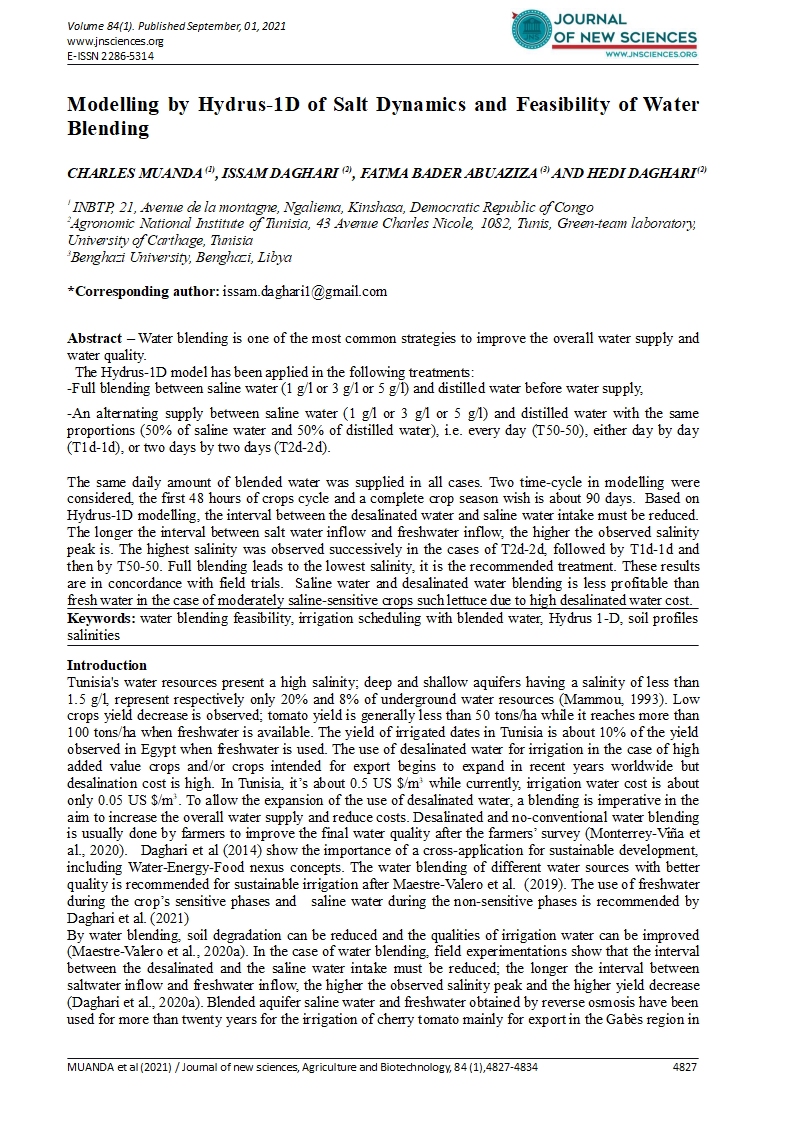

- Category: Volume 84
- Hits: 1780
Modelling by Hydrus-1D of Salt Dynamics and Feasibility of Water Blending
CHARLES MUANDA (1)
ISSAM DAGHARI (2)
FATMA BADER ABUAZIZA (3)
HEDI DAGHARI (2)
1 INBTP, 21, Avenue de la montagne, Ngaliema, Kinshasa, Democratic Republic of Congo
2Agronomic National Institute of Tunisia, 43 Avenue Charles Nicole, 1082, Tunis, Green-team laboratory, University of Carthage, Tunisia
3Benghazi University, Benghazi, Libya
Abstract – Water blending is one of the most common strategies to improve the overall water supply and water quality.
The Hydrus-1D model has been applied in the following treatments:
- Full blending between saline water (1 g/l or 3 g/l or 5 g/l) and distilled water before water supply,
- An alternating supply between saline water (1 g/l or 3 g/l or 5 g/l) and distilled water with the same proportions (50% of saline water and 50% of distilled water), i.e. every day (T50-50), either day by day (T1d-1d), or two days by two days (T2d-2d).
The same daily amount of blended water was supplied in all cases. Two time-cycle in modelling were considered, the first 48 hours of crops cycle and a complete crop season wish is about 90 days. Based on Hydrus-1D modelling, the interval between the desalinated water and saline water intake must be reduced. The longer the interval between salt water inflow and freshwater inflow, the higher the observed salinity peak is. The highest salinity was observed successively in the cases of T2d-2d, followed by T1d-1d and then by T50-50. Full blending leads to the lowest salinity, it is the recommended treatment. These results are in concordance with field trials. Saline water and desalinated water blending is less profitable than fresh water in the case of moderately saline-sensitive crops such lettuce due to high desalinated water cost.
Keywords: water blending feasibility, irrigation scheduling with blended water, Hydrus 1-D, soil profiles salinities

